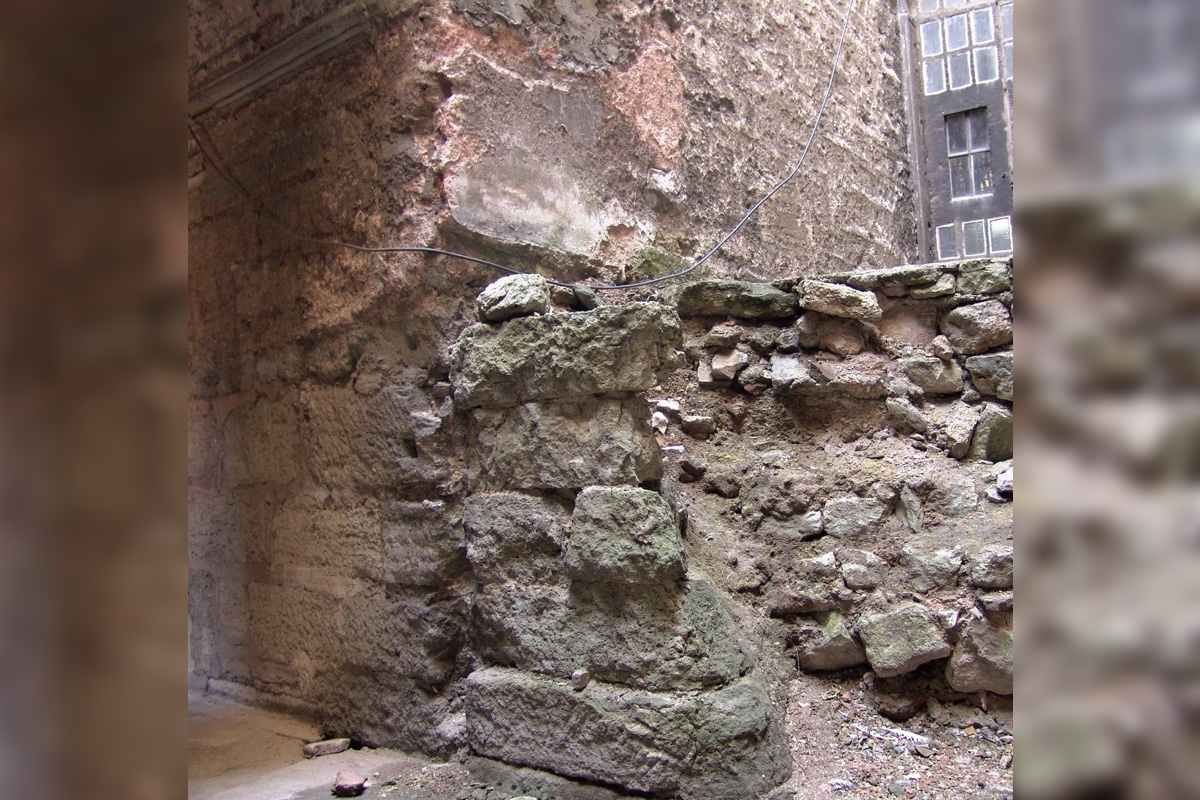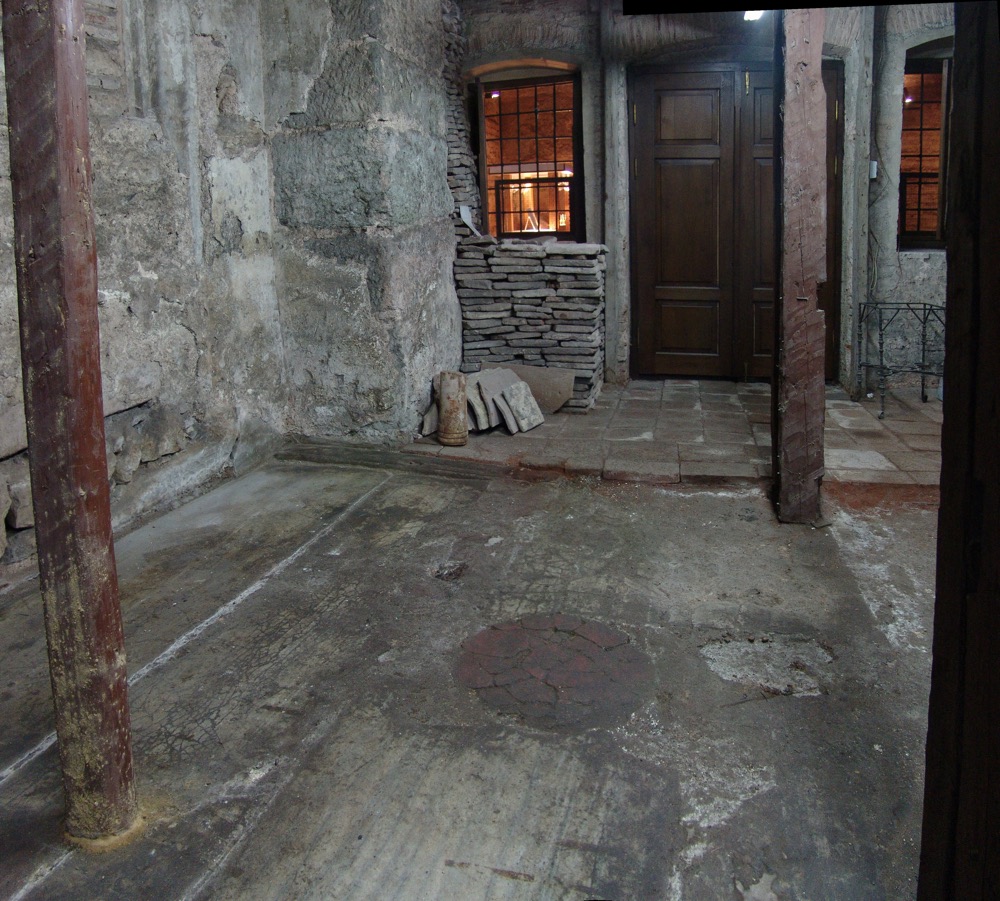Long-Lost Baptistery for Emperors Possibly Discovered at the Largest Cathedral in the Ancient World

Archaeologists have discovered what may be the long-lost Great Baptistery at the largest Christian cathedral ever constructed in the ancient world. Inside that structure, emperors would have baptized their children more than 1,400 years ago.
In addition to the baptistery, the archaeologists made several other discoveries at the Hagia Sophia (which means "holy wisdom") cathedral, located in what is today Istanbul.
Between 2004 and 2018, the researchers discovered previously unknown buildings, reconstructed what the cathedral's Patriarchal Palace looked like and even identified a spot where the Byzantine emperor once stood during a ceremony, said project leaders Ken Dark and Jan Kostenec in a recently published book, "Hagia Sophia in Context: An Archaeological Reexamination of the Cathedral of Byzantine Constantinople" (Oxbow Books, 2019). [See Photos of the Discoveries at the Hagia Sophia]
The cathedral has a long history. In the year 532, a series of riots resulted in a church called Hagia Sophia being burned down. In response, Justinian I (reign 527 to 565), the Byzantine emperor, ordered the construction of a massive cathedral, also to be called Hagia Sophia. Completed in 537, that structure has a dome that soars 180 feet (55 meters) above the ground.
Then, in 1453, the Ottoman Empire captured Constantinople (as Istanbul was called at the time) and turned the cathedral into a mosque. Today, the Hagia Sophia is a museum.
Many discoveries
"Our fieldwork between 2004 and 2018 on the area surrounding the sixth-century church found new Byzantine structures to its north, west and south," wrote Dark and Kostenec in their book. Those structures include "traces of the white marble courtyard that once surrounded the sixth-century cathedral."
The researchers also identified what may be an ancient library located underneath a structure known as the large hall. Based on its size, that library could have held thousands of scrolls, Dark and Kostenec wrote. [Image Gallery: Stunning Byzantine Mosaic]
Get the world’s most fascinating discoveries delivered straight to your inbox.
Many of these and other discoveries were made after museum officials restored parts of the cathedral. During that restoration, authorities removed some of the more recently placed plaster, revealing the medieval and ancient remains that lie underneath, including mosaics, frescoes, sculptures, tiles and graffiti, Dark and Kostenec wrote.
In fact, researchers found that a structure known as the northwest vestibule was part of the sixth-century cathedral built by Justinian I and was not constructed by the Ottoman Empire, as was previously believed.
"Recognizing that the northwest vestibule was part of the Justinianic church means that all previous plans of Hagia Sophia are incomplete and their use should cease for scholarly purposes," Dark and Kostenec wrote.
Dark added in an email with Live Science that "The discovery of such a large 'new' part of Justinian's church of Hagia Sophia is unprecedented in recent decades … and alters significantly the known plan of that world-famous building."
The emperor stands here
Within another structure, called the northeast vestibule, researchers identified a disc-shaped spot made out of a type of igneous rock called porphyry, on which the emperor would have stood. It "marks the position where the emperor stood in one of the ceremonies or liturgies in the church. As it is a part of the original sixth-century floor of Justinian's church of Hagia Sophia, then it must mark the position where that emperor was intended to stand," Dark told Live Science.
"As such, it is probably the only place where it is possible to identify anywhere the precise spot on which the most famous Byzantine emperor [Justinian I] stood," Dark said.
The researchers also found the remains of white marble slabs, suggesting that the exterior of the Hagia Sophia may have been covered in more of the slabs than was previously believed.
"This would have given the building a strikingly different appearance when constructed compared to the red-brick and painted-plaster surfaces of recent centuries," Dark and Kostenec wrote.
They added, "Covering the area around the church and its exterior walls with white marble slabs will have reflected light both onto the building from its surroundings and off its walls, enhancing visibility from a distance and in bright sunlight, creating an almost luminous quality."
More discoveries to be made
Plenty of additional discoveries likely await archaeologists at the Hagia Sophia, the researchers said. At this point, they can't even tell exactly how many resources and hours of work went into construction of the cathedral.
"While many parts of the complex remain undiscovered, preventing accurate quantification of the time and resources involved," the construction work that went into the Hagia Sophia is immense, wrote Dark and Kostenec.
"The scale of the construction project is such that few, if any, comparisons in the world of late antiquity are possible," wrote Dark and Kostenec.
- In Photos: Gazing into a Medieval Church
- In Photos: 8 Byzantine Empire Era Shipwrecks Excavated in Turkey
- The 25 Most Mysterious Archaeological Finds on Earth
Originally published on Live Science.

Owen Jarus is a regular contributor to Live Science who writes about archaeology and humans' past. He has also written for The Independent (UK), The Canadian Press (CP) and The Associated Press (AP), among others. Owen has a bachelor of arts degree from the University of Toronto and a journalism degree from Ryerson University.



